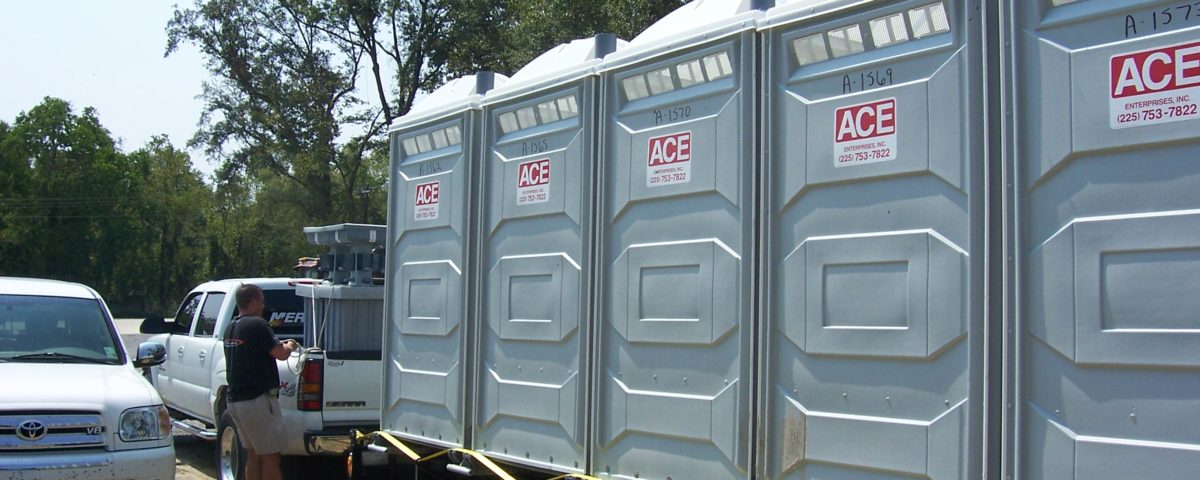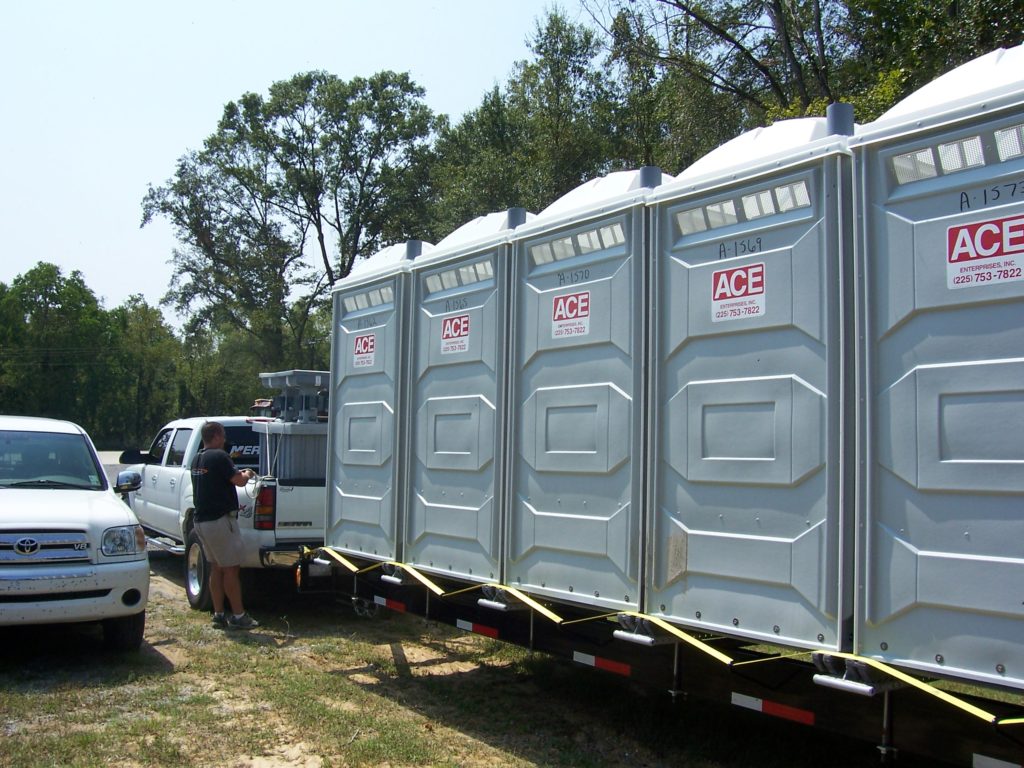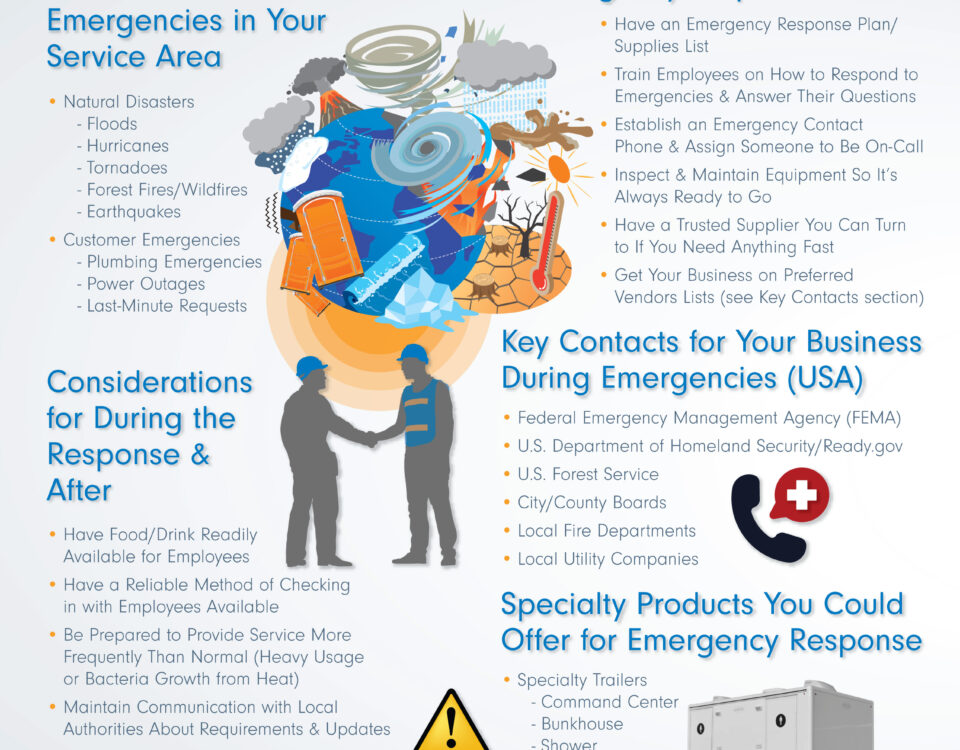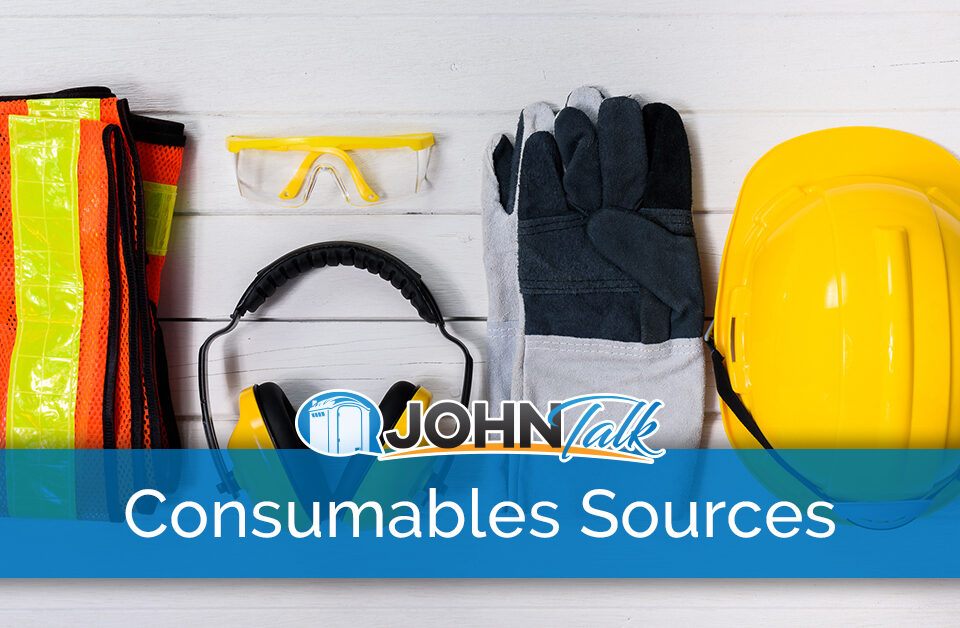
INFOGRAPHIC: 10 Things to NOT Ask When Interviewing a Potential New Employee
November 26, 2018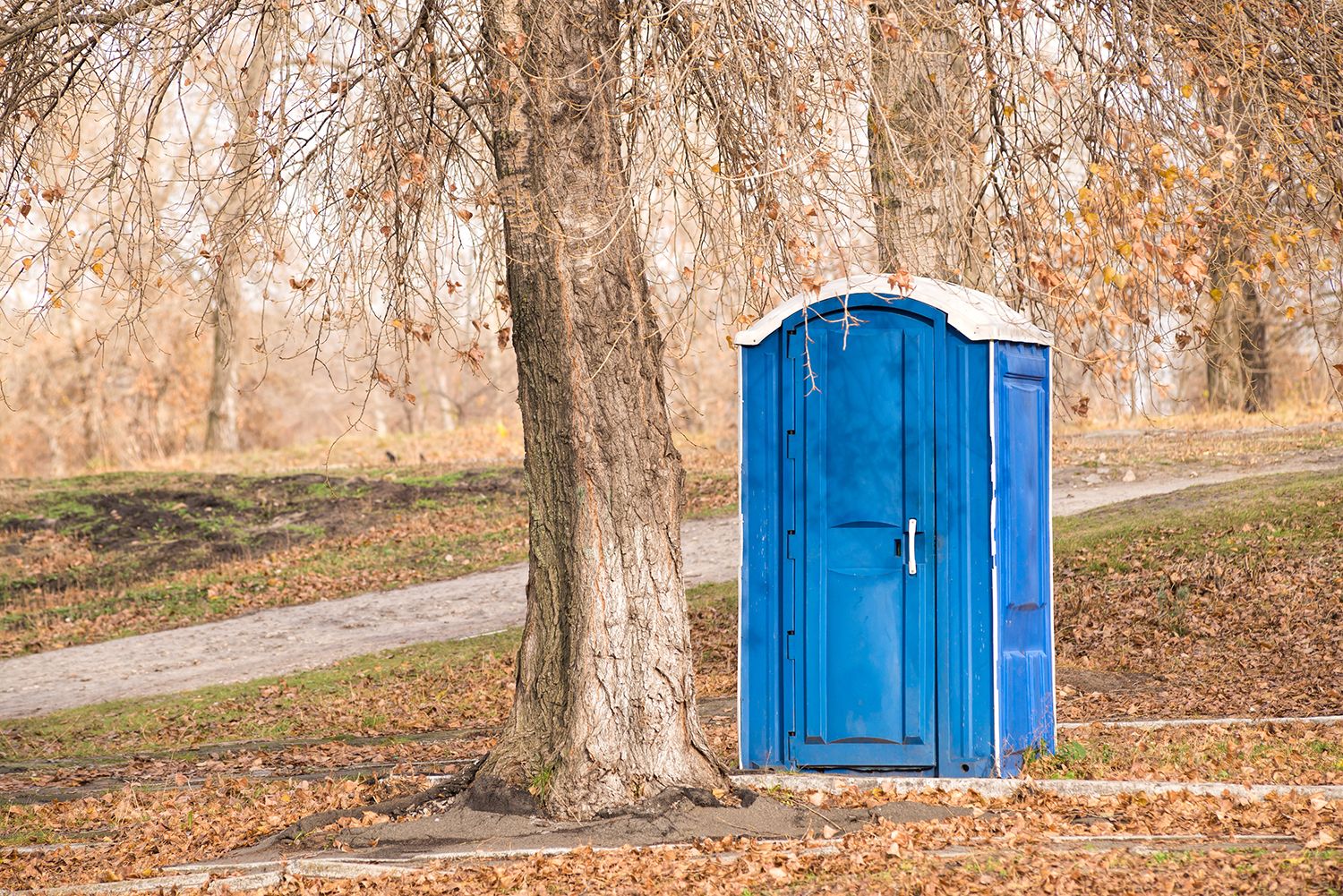
Avoid Losing Business to the Change in Seasons
December 3, 2018How you maintain your units and other portable sanitation products when you’re not using them is just as important as how you care for your units when you’re using them.
Consider all the time your units aren’t in use, even during your busy season. During the slow season, unit downtime increases. They may sit for long periods in all sorts of weather, from blazing heat to extreme cold.
There are three times in particular when you should take steps to protect your portable toilets when they aren’t being used: 1.) When you store your units; 2.) When you transport your units; and 3.) When you handle units (loading and unloading). Also, an essential element in maintaining your inventory during downtime is security.
PROs have established basic practices to ensure that units have a long and profitable service life. Much of what you do during these times is common sense and becomes routine with experience. However, it’s helpful to occasionally take a step back to review your processes and how carefully you and your employees follow them.
Storage
By far, the best storage environment for your units and other products is indoors — in a warehouse, pole barn or industrial garage. It not only protects your inventory from the elements, you’ll enjoy greater security against theft, vandalism and damage. It’s also more comfortable to clean and repair units inside.
However, polyethylene portable toilets are manufactured tough to be resistant to the effects of cold, snow, heat, humidity, rain, wind and pollution. If your only alternative is to store them outside, they will be fine, especially if you take the proper steps to prepare them for downtime.
During your busy season, you will most often be storing units that are returning from special events. They tend to be stored until the following weekend. (Units at construction sites are there long-term, as are units rented for agricultural job sites during planting and harvesting seasons.) Special event units are usually the nicer-looking or newer units that you have, so a little TLC will keep them at their best and ready for the next event.
During your busy season, prepare all units for storage with the following maintenance steps:
- Pump the units at the site where you pick them up. Don’t transport units that haven’t been pumped out.
- At your yard or storage facility, unload units and line them up in rows to be cleaned. Keep similar models together for easier cleaning.
- Clean out the garbage and remove toilet paper.
- Inspect for graffiti. There are many products available in the portable sanitation market for easy graffiti removal.
- Pump out any waste residue. (Holding tanks should also be pumped out before being stored away for extended periods.)
- Rinse out the tank and under the lip of the stool area.
- Scrub the units inside and out. Take extra care to wash the door handles, soap dispensers and paper towel dispensers. Wash the wheels of units so they will continue to move smoothly.
- Rinse or pressure wash. Make sure units fully dry to prevent the growth of mold.
If you are storing units outside, take additional steps:
- Place units on high, level ground. Low spots in your yard run the risk of flooding, and unlevel ground may make it easier for units to tip over. If possible, shelter the units from the wind as another protection from tipping. Some models have gaps in the door that can allow a lot of dirt and dust to build up. Store them with the doors facing each other, and sideways from vehicle traffic. Locking units will also help keep out debris, as well as protect against theft and vandalism.
- Seal openings. Make your units as airtight and watertight as possible. Seal the exterior vent stack and secure all fill and drain plugs or caps. Sealing is a safeguard against debris, birds, insects, rodents or other small animals from entering the units, plugging lines and causing contamination and/or damage.
- Maintain an organized yard. A well-ordered yard allows you to do inventory easily and access your units quickly, especially for emergencies or last-minute requests. Keep similar units and models together.
During your slow season, especially in colder climates, long-term storage requires additional precautions:
- To prevent freezing, tape vents on the windward side, place the units against the wall of a building and pack snow or straw around the base of the units.
- Add RV-type antifreeze to the lines of the units. Keep drain plugs open to help prevent ice from forming, which can expand and crack the reservoirs.
Use downtime to quality-check your inventory:
- Check each unit for wear and tear. You may decide to swap out a worn-looking special event unit and use it on construction sites instead. Consider adding to your inventory with new or upgraded toilets.
- Repair damaged units. Separate them into one group.
- Restock parts. While repairing units, make a list of some of the most common parts that may need to be replaced throughout the year, such as toilet seats, urinals, mirrors, door springs and With parts in stock, you can get a unit back into action faster during your busy season.
Other Products
Sinks and hand wash stations, once emptied, washed and cleaned, can be stored outdoors if indoor storage is unavailable. Some models can be placed inside units for storage and transportation.
When storing sinks for long periods in cold weather, add antifreeze to the tanks to keep the tanks and lines from freezing and breaking. Push the foot pump until antifreeze comes out from the faucet.
Holding tanks can also be stored outside with no other maintenance besides emptying.
Security
Whether you’re storing your inventory inside or outdoors, you can have all of your precautions undone by neglecting basic security. Security measures are your 24/7 eyes and ears to prevent theft and vandalism. Security can also help guard against fire and flooding, allow you to track who enters your facilities, and with interactive services, you can monitor your security system from your smartphone, watch live video remotely and receive notifications of problems. Insurance companies may offer discounts to businesses that have security systems in place.
The main components of your security system may include:
- Lighting
- Fencing
- Usually a separate service from electronic security. Many companies specialize in commercial fencing.
- Video surveillance (closed-circuit television)
- Electronic security: alarms, motion detection
- Access control: authorized access to restricted areas
- Asset tags or security barcode labels.
- Asset tracking also has other benefits, such as allowing you to monitor your unit usage and plan maintenance and repairs.
You can shop around to find a firm that offers total security systems for commercial property that will closely match your needs and budget. You can go local and contact your Chamber of Commerce for suggestions. You can also research security systems and security companies online and through social media.
Get the JohnTalk “ALL-ACCESS PASS” & become a member for FREE!
Benefits Include: Subscription to JohnTalk Digital & Print Newsletters • JohnTalk Vault In-Depth Content • Full Access to the JohnTalk Classifieds & Ask a PRO Forum
Transportation
Your units are on the road a lot. They are in transit from your home base to event or worksite and back again hundreds of times throughout the year. With every trip, an unsecured or poorly secured portable toilet is a nightmare scenario waiting to happen!
The bulkiness of units makes them unwieldy, and their lightweight, flexible construction can actually make transport more difficult. Safety should always be your first priority. The second important consideration is efficiency. It requires time and money to move your units, so you want to be as efficient as possible.
You can convey your units with confidence by following correct methods and using the right equipment to secure your load.
The most important skill to master is properly strapping down the unit. Portable toilets can change shape during transit (due to the flexible plastic) which can cause slack in your straps or even unhook the straps. To counter this problem, some inexperienced drivers may over-strap the units. Over-strapping can damage the exterior, creasing or even cracking your units.
PROs have generally found that using ratchet straps offers the most effective control compared to other methods such as ropes and tie-down straps. First, turn the units so the doors are facing the back of the truck to prevent scratching and to keep bugs from sticking to the front. With the unit in place, use one ratchet strap in the middle and one at the bottom, just over the skid, to secure the unit. Some operators use steel carabiners instead of hooks. When the toilets flex, the carabiners won’t come undone. With your units secured, you can safely drive the speed limit on any road.
Always follow the truck or trailer manufacturer’s recommendations on securing your load.
The trucks and trailers themselves are designed specifically for the portable sanitation industry to make securing and transporting your units as safe and efficient as possible. Trailers feature low bed height and alternatives to tie-downs and straps, including carrier slats, built-in locking systems and clamps. Trucks and trailers come in different configurations:
- Standard pumpers typically hold two basic units or one handicap-accessible unit
- Flatbed trucks range in size and capabilities from about 6 to 12 units
- Combo trucks or hybrids can usually carry about 8 units
- Trailers can range anywhere from 8 to 48 feet in length and can carry up to 20 units
Loading and Unloading
A standard portable toilet weights around 150 pounds, while a luxury unit can weigh upwards of 500 pounds. Nevertheless, when you follow the proper techniques, loading and unloading units can be a fairly easy job. That’s important when you consider how many times in a work week you load and unload units.
Poor technique, skipping steps in the process or rushing can result in downtime and decreased profits. You risk wasting time, you might damage your equipment or other property, and you or your drivers can get hurt.
In this instance, we are reviewing how to load and unload units to and from a truck in which the bed is raised. Trailers made for portable toilets can be lowered basically to ground level.
As your company grows and you hire drivers, make sure they, too, are trained in proper loading and unloading techniques. Don’t put them on a route until they can walk through the process without missing a step every single time.
Loading
- To load a unit from your yard, first, remove or secure the toilet paper and close the door. When loading a unit from a site, first, make sure no one is inside!
- When loading a unit from a site, pump the waste, then secure the toilet paper and close the door before moving.
- Drop the tailgate so the truck is ready.
- For this next important step, you will need to master the important skill of using a dolly. It’s not difficult. If you’re just beginning your portable sanitation business, you should practice until you get the hang of it. Slide a dolly under the skid from the rear of the unit. Put your foot on the axle of the dolly to keep the bottom from moving. Grab the rear corners of the unit as high up as you can, one hand for each corner. Pull the unit backward towards you. This will prop the unit on the dolly wheels where it can maneuver easily. The trick is to keep the unit balanced over the axle.
- Dolly the unit to the loading zone of your truck (usually the rear).
- Push the unit right up to the lip of the tailgate so the front-most part of the skid is on top of your rack. (Some unit models such as PolyJohn’s have a molded catch in the skid so the unit can rest in place at this point.)
- Hold the unit steady and push it the rest of the way up the truck. Push with your legs, not your back.
- Secure your units as described above.
Unloading
The unloading process from truck to ground is different from loading. You’re not just reversing the steps.
- Unfasten the unit.
- While you are still on the truck, slide the unit to the edge of the truck bed.
- Once you are on the ground, drop the tailgate.
- Slide the unit halfway off, tilt back gently and let gravity do its job to drop the unit to the ground. Guide the unit so the rear of the skid touches down first, then gently let the rest of the skid hit the ground.
Be particularly careful and attentive when unloading at an event. Crowds are your most important safety concern. Prepare to encounter tight spaces, tight timeframes and terrain that isn’t dolly-friendly. Arrive early, get as close as possible to your designated site (to avoid pushing units on their bottoms), and take it slow!
Safe Lifting
If a unit starts to fall while you’re loading it, what should you do? Your first instinct is probably to try and stop it. Bad move! That’s a good way to hurt your shoulder or back (two of the most common workplace injuries). Just let it drop!
A toppling unit is just one of the many ways you or your drivers can suffer a workplace injury. Other common causes are overexertion, falling, improper lifting, reaching or gripping and repetitive use.
Portable restroom operators can combat workplace accidents by cultivating a culture of safety. Incorporate safety programs, offer safety incentives and provide annual refresher courses and literature on safe loading and unloading methods.
Equipment for Handling
The portable sanitation industry offers a wide range of labor-saving equipment that you can use to increase your efficiency, make work less strenuous and limit the potential for on-the-job injuries.
- The mini Metro Mover is a lightweight portable restroom dolly/hand truck with four wheels and extra-long forks. It’s collapsible and fits inside a portable restroom unit.
- The Mongo Mover and Super Mongo Mover hand trucks will easily move standard and ADA handicap restrooms. The tall handle creates leverage. Mongo Movers are constructed of steel and aluminum for light weight and durability and are available with pneumatic or flat-free foam tires. Four-tire models make it usable when moving mostly empty restrooms, while six- and eight-wheel models are available for soft ground and heavier loads.
- Mini skid steers (skid-steer loaders) and Bobcats can be used to transport toilets in your storage yard.
Looking to Take Your Portable Restroom Business to the NEXT LEVEL? Download our FREE Guide: “Your Guide to Operating A Portable Restroom Business.”
Thinking About GETTING INTO the Portable Restroom Industry? Download our FREE Guide: “Your Guide to Starting A Portable Restroom Business.”


